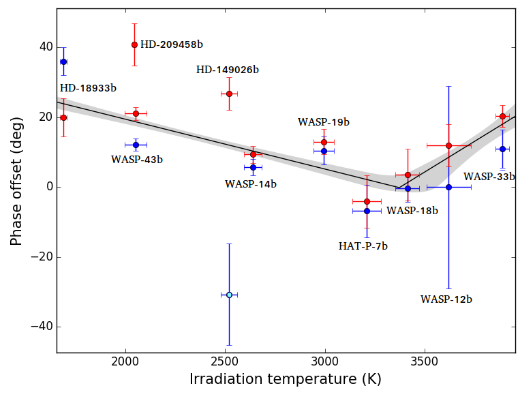Here’s an interesting plot from a new paper by Michael Zhang et al.

The x-axis is the irradiation temperature for a sample of hot-Jupiter exoplanets; that is, how blasted the day-side of their atmosphere is by irradiation from the host star. This depends on the temperature of the star, its size, and the closeness of the orbit.
The heat of the day side of the planet is then transported to the night side by winds (the planets are phase-locked, so the same side always faces the star). The efficiency of this re-circulation of heat then determines whether the hottest regions of the planet are directly facing the star, or whether they are offset by some angle. This angle can by measured by looking at the “phase curve” radiation in the infra-red.
The y-axis then shows the observed offset angle as a function of the irradiation. The plot shows that the offset angle appears to be highest for cooler planets, and then decreases as irradiation increases, but then perhaps increases again for the very hottest planets such as WASP-33b.
There is, however, also a lot of scatter in the plot. The authors speculate that this might result from differing metallicities of the planets, which affects how well they form clouds, which can then determine the albedo of the planet, and thus how much irradiation is simply reflected.


